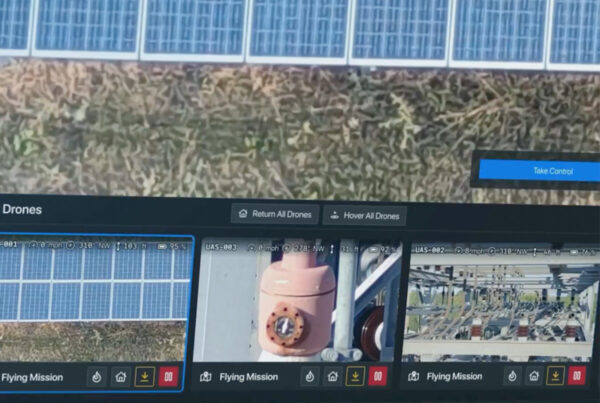
Utilidata has announced a collaboration with NVIDIA to create a new module with the purpose of providing real-time artificial intelligence (AI) at the edge of the grid. The new module will be powered by the NVIDIA Jetson™ edge AI platform and will work with Utilidata’s smart grid chip, which is installed alongside electric meters to enhance grid resiliency, lower operations costs, and integrate distributed energy resources (DERs). The new module will be deployed in conjunction with the smart grid chip beginning in 2024.
The purpose-built module has a specific-sized memory block for grid edge data, optimized clock speeds for the central processing unit (CPU) and graphics processing unit (GPU), and a customized number of cores to optimize module cost. It is designed to quickly process measurements from the grid and generate AI models for granular demand forecasting, identifying pre-outage conditions, and integrating new DERs into the grid.

The module’s smaller size is expected to make it easier to add devices like EV chargers, solar inverters, and meters directly into grid edge. The open hardware and software architecture is intended to allow third-party developers to integrate proprietary software and build new grid-edge applications, using standard metrology, data processing and DER interaction tools.
The edge of the electric grid, where customers’ homes and businesses connect to the utility system, is becoming increasingly complex. This complexity is due to the rising number of people who are producing and storing their own energy with solar, batteries and EVs. Powerful computation is required to process the large amounts of data being generated within seconds and provide grid operators with the necessary tools to enhance reliability and flexibility. Edge AI is a technology that aims to accelerate complex computation and decisions at the edge of the grid, where data is being generated by energy consumers. This technology strives to reduce the need to send large amounts of complex data to a central cloud computing data center, which can lead to increased costs and latency, and delayed real-time decision-making.
 Utilidata started working with NVIDIA in 2021 to develop the smart grid chip utilizing the NVIDIA Jetson Nano system-on-module. The first batch of these devices was set up in 2022 for a demonstration project in Lake Placid, New York, where they were installed at various customer locations along the circuit that supplies the Olympic Bobsled Complex. The company plans to deploy the smart grid chips in 2023, in partnership with several utility companies, and they will be powered by the NVIDIA Jetson Orin platform.
Utilidata started working with NVIDIA in 2021 to develop the smart grid chip utilizing the NVIDIA Jetson Nano system-on-module. The first batch of these devices was set up in 2022 for a demonstration project in Lake Placid, New York, where they were installed at various customer locations along the circuit that supplies the Olympic Bobsled Complex. The company plans to deploy the smart grid chips in 2023, in partnership with several utility companies, and they will be powered by the NVIDIA Jetson Orin platform.
Last year, Utilidata also launched an advisory board with NVIDIA to guide the development and deployment of grid edge software solutions, including the smart grid chip. The advisory board brought together executives from utility companies and clean energy and electric transportation providers. Founding members included American Electric Power, Holy Cross Energy, Duquesne Light Company, PPL, Sunrun and Silicon Valley Clean Energy.
The smart grid chip, which is a distributed AI platform, will be piloted by Portland General Electric (PGE) in Oregon. The smart grid chip’s open software design should enable the utility and its partners to develop custom applications and solutions. The deployment of smart grid chips within PGE’s Smart Grid Test Bed expects to provide real-time visibility at the edge of the grid, support the company’s decarbonization efforts, and position PGE to scale the next generation of distributed intelligence across a modern grid.
The Smart Grid Test Bed is a community-driven approach to managing energy use and demand to accelerate the clean energy transition. The test bed spans three neighborhoods with over 20,000 participating customers who are incentivized to use smart-home technologies, such as thermostats, water heaters, EV chargers, and batteries, to gain better control over their energy use and carbon footprint while helping PGE operate the grid more efficiently.














